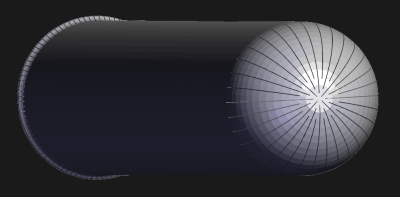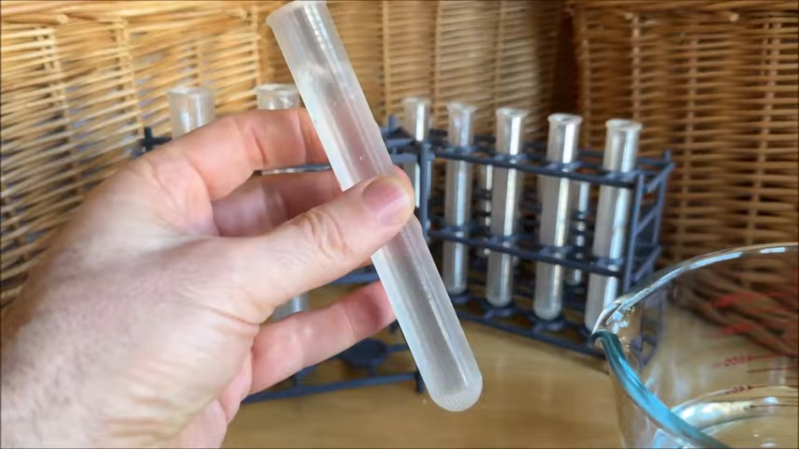[DaveMakesStuff] uses 3D printed test tubes for plants and similar purposes, and he’s shared how to make them on a 3D printer, complete with different models each optimized for different nozzle sizes.

It’s not too hard to get clear-looking prints in spiral vase mode by using a transparent filament, but the real value in his design is that it comes out reliably watertight, with an extra-strong base and rim.
How is this accomplished when using spiral vase mode, which extrudes only a single wall perimeter? By using fancy geometry on the part, which makes the nozzle follow a high-density path that turns back onto itself multiple times, in concept a little like a switchback trail. The result is extra-dense areas on both the rim and the bottom of the tubes. This helps make them not only watertight, but far stronger than a single wall.
This technique is reminiscent of an earlier method we saw of enhancing the strength of vase mode prints by modeling thin slots into an object. After slicing, the model still consists of a single unbroken spiral extrusion. But in practice, the extruded plastic forms what resemble structural ribs. Why? Because those technically-adjacent extruded lines are so close to one another that they end up sticking together. Something similar is being done here by [DaveMakesStuff] to ensure that the bottom and top of the tubes are extra strong.
You can see a short video (embedded below) that showcases the tubes, as well as some modular 3D-printable racks that [DaveMakesStuff] also makes. And should you want some tips on getting better transparency from your 3D prints, the essentials boil down to printing with transparent filament, slightly hotter, and with a slightly higher extrusion rate.
















This sounds like the kind of thing that should be done in a slicer, rather than in the model.
There is a slicer setting for go-back-and-forth-every-few-millimeters? ;)
Nice tips on watertightness, but test tubes seem hardly worth the effort, given they’re just a dime a piece in modest quantities.
yep, and also for lots of test tubes use this plastic gonna be problematic, chemicals, temperature…
great tips on the print through!
This is a solution looking for a problem…. Actually it’s a solution that causes problems. Glass is non reactive, doesn’t leach chemicals and is easy recycled… These plastic test tubes are none of those things.
Test tubes are literally the cheapest lab supply you can buy to the point they are disposable and even if you reuse them they are cheaper yet. They are also the absolute easiest thing to make yourself from glass tubing. a plastic test tube would be useless for anything requiring heating, chemical resistance, clarity to observe or smooth, sterilizable surfaces. Basically everything test tubes are used for. Inescapable conclusion the actual purpose is YouTube clicks.
Gosh, folks, why do anything?
I would expect that attitude (the buy-instead-of-make crowd) on reddit or anti-social media, but to find that here on a hack site is disheartening to say the least. Even overlooking the sheer because-I-wanted-to of it, I guess these people have never heard of proof of concept.
Let’s try everything instead!
Some ideas are just dumb.
Tricking the slicer by Fing up your model is right at the top of that list. Just increase top and bottom layers.
3d printing test tubes? There is no smart way to approach that.
In general, never 3d print something already being injection molded. Unless unreasonably priced, unavailable for days and needed now or wanted by someone stupid with lots of money.
I wonder if the plants get lonely?
Might be nice tips for making airtight tubes as well, for 3d printing musical instruments!
I’d like to see this technique used to make a nice vase